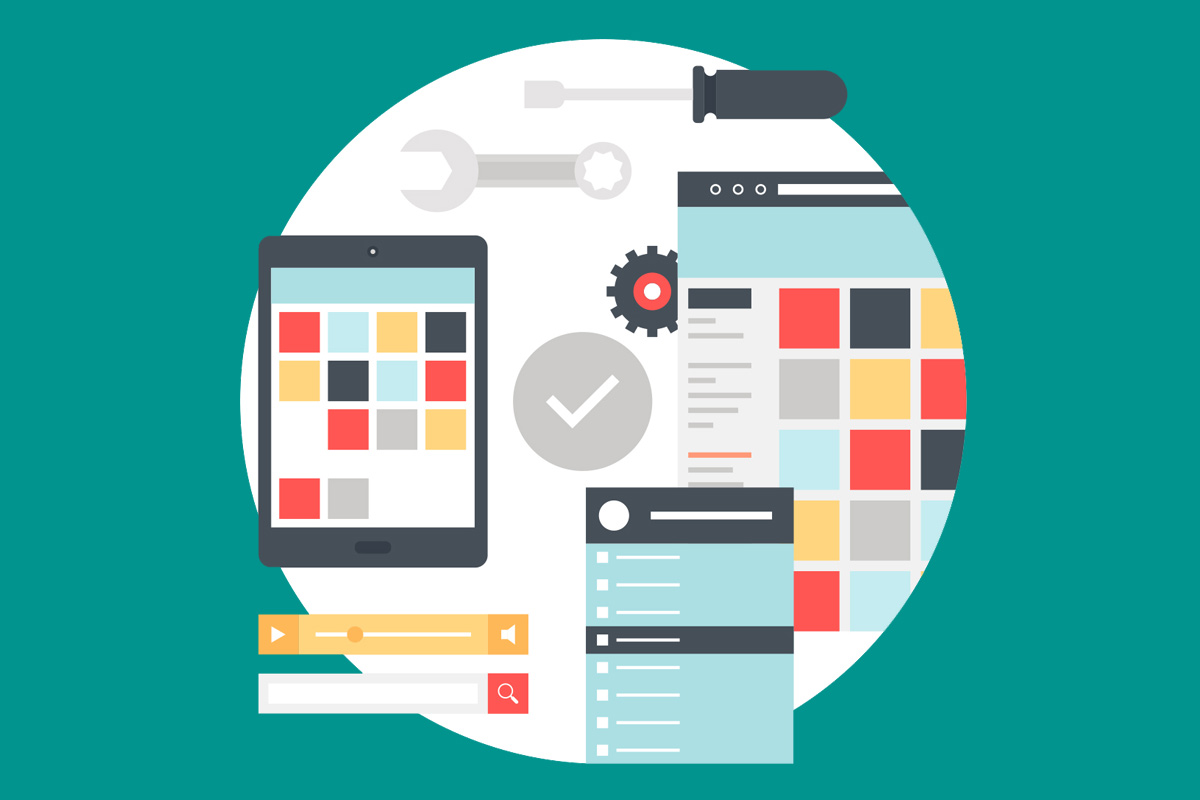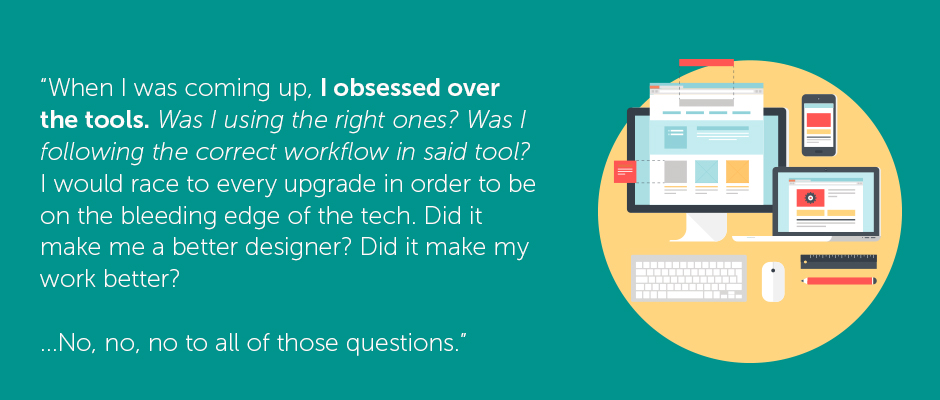
Raise your hand if you remember Dreamweaver. Actually, I can’t see any hands, so tell the person sitting next to you that you remember Dreamweaver. You’re bad ass enough to have rocked it this long, go ahead, tell them. I’ll wait. Back? What did they say? Were they like, “what?!”Or were they like, “dude, can’t you see I’m busy trying to find the perfect GIF response for this Slack thread?” What do you people do all day? Seriously.
If you’re not old enough to know what Dreamweaver was (and still is), then I consider you young pup, and I’m glad you’re here because I wish that I would have read an article like this when I was a young designer. And for you older folks who do remember Dreamweaver, stick around. There’s gonna be a pop quiz and some gluten free brownies at the end. As for Dreamweaver, it was how we made websites. A big step up, in my humble opinion from Home Site (shout out to the OG’s). Dreamweaver was *the* tool to use, until it wasn’t.
Like any forward moving industry, the tools evolve and what once was on top of the heap can quickly slide down the back of the pile as a new contender takes the top spot.
We’re seeing that now as Sketch is starting to take over as the primary tool for many UI designers. This type of shift isn’t anything new, and it’s not just connected to software either. If you’re a developer, or familiar with Javascript frameworks, then you’ll remember that Ember JS and Backbone were the cat’s meow (what does that even mean?) a few years ago, only to be replaced with Angular and React. If you want to go way back into the archives (my Dreamweaver peeps), then you’ll remember the battle between Prototype.js, Scriptaculo.us and jQuery. Those were the days... Arcade Fire didn’t exist and all was right with the world. I digress.
The Tools Don’t Matter
Ok, we get it. The tools are changing, they’ve always been changing. So what? Well, we tend to obsess over our tools. I would link up the countless articles about tools and the best ones and 13 awesome ways to use Illustrator to create HTML emails, but I don’t feel like I need to, because I’m sure you’ve seen them too. But here’s what I’m going to do today: I’m going to share this little secret with you. It’s a secret that I’m sure the OG Dreamweaver users know, and now you will too.
So tonight when you head home and you do your daily standup at your dinner table with your spouse and your kids, this is what you can share: the tools don’t matter.
Let that sink in. Just kidding, it’s not really that deep, but if you really do think about it, it
can be incredibly freeing. The new designers, the folks who are new and fresh to our
community, need to hear this: the tools don’t matter. When I was coming up, I obsessed
over the tools. Was I using the right ones? Was I following the correct workflow in said
tool? I would race to every upgrade in order to be on the bleeding edge of the tech. Did
it make me a better designer? Did it make my work better? Did it give me Twitter cred?
(j/k, Twitter wasn’t even around then) No, no, no to all of those questions.
Tools: A Means To An End
I’m sure it’s been said before, but the tools are merely a means to an end. Hey, since you purchased the first secret (for only $4.99 plus shipping/handling) I’ll share another little secret with you for free: use the right tool for the job. Your mom may disagree, but it’s OK to be promiscuous with your tools. Use a different one everyday, or, if you’re super adventurous, use two or three tools in the same day. I don’t care, and neither do they. Your focus should be on delivering the best work you possibly can — and if you can do that with MS Paint, then by all means, proceed. Some of our tools are very specific, and others are broader brushes. You know which ones are best for which situations, and if you don’t, you’ll quickly learn.
Design In Your Microwave, Or Why You Should Master Your Own Workflow
Even as I think about myself sitting here encouraging you to use whatever tool you see fit for the job, I can extend this message into workflows as well. Mobile first, content first, prototype in Framer, design in the browser, design in Sketch, design in your microwave.
It can almost be paralyzing how many different directions a designer can be pulled in when every option seems like the right one. What’s a boy to do? ($5 to the person who tweets at me with the 90’s song that lyric is from).The thing is, none of these workflows are wrong. None of the tools that we have are bad. They all have a place and they all have a purpose.
Master one, or master them all, that’s up to you. The real skill is in knowing when to use them and why. Master *that* and you’ll be just fine. Don’t let an article steer you in one way or another. Instead, take it for what it is–embrace the knowledge and grow from it. Additionally, to the folks sharing your wisdom about our tools or our workflows, keep writing! I want to learn as much as I can, and frankly, I don’t have the time to research every possible option. It’s your willingness to share that enables me to learn quicker, understand better, and ultimately make the right decision when picking the right tool for the job.
So there you have it. My soapbox of tools and workflows. Enjoy your brownies, and long live Dreamweaver.
